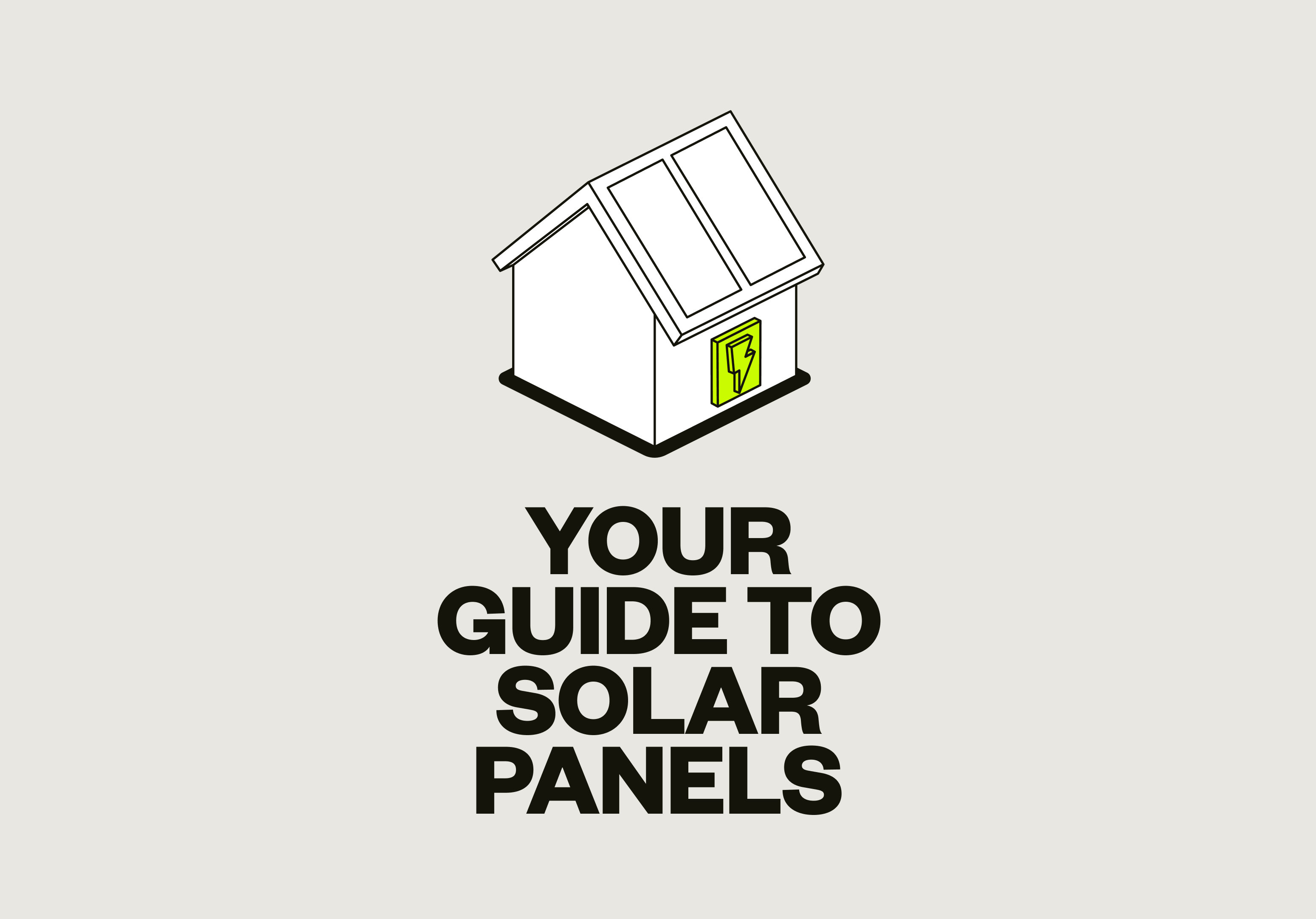June 2024
Different types of solar panels in the UK
In this article, we’ll discuss some of the key solar panel technologies currently available (or soon to be available).

Understanding which solar panels are available in the UK and which ones might be the best for your needs can be quite challenging. There are many different solar panel solutions, each with its own advantages and disadvantages.
In this article, we’ll discuss some of the key solar panel technologies currently available (or soon to be available). We'll examine the different generations of solar panels, highlight their pros and cons, and share which solar energy solutions might be the best for you.
1st generation solar panels
The first generation of solar panels uses solar cells from one of two types of silicon: monocrystalline silicon or polycrystalline silicon. These first-generation panels are the most commonly used solutions for capturing solar energy. While the solar cells in these panels are both made using silicon, there are some important differences. Let’s take a closer look at these two types of silicon-based solar cells.
Monocrystalline solar cells
Monocrystalline solar cells, also known as mono-Si solar cells, are made using single crystals of highly purified silicon. Wafers are cut from these carefully grown silicon crystals to be used as solar cells. This high purity gives this type of solar cell its dark black appearance, as well as its high efficiency and longer lifespan. This also allows it to operate well at higher temperatures and under lower light conditions. If you install solar panels with us here at So Energy, we use this type due to their efficiency.
Polycrystalline solar cells
Polycrystalline solar cells, also referred to as poly-Si solar cells, also consist of silicon, but instead of using single highly purified silicon crystals, silicon is melted down to create the solar cells. This approach to manufacturing makes polycrystalline solar cells easier and, therefore, cheaper to produce, as well as imbuing them with a blue hue rather than a black appearance. This manufacturing method reduces the efficiency and lifespan of the cells. Polycrystalline solar cells also lose efficiency at higher temperatures and don’t operate as well under lower-light conditions as monocrystalline solar cells.
2nd generation solar panels
The second generation of solar panels is also called thin-film solar panels because they use solar cells that are much thinner than their first-generation counterparts. These cells are made from materials that allow you to reduce the cell’s thickness and still capture solar energy.
Thin-film solar cells
Thin-film solar cells, or TFSCs, use a much thinner layer of photovoltaic cells compared to first-generation solar panels. The photovoltaic cells in TFSCs are made from materials like amorphous thin-film silicon (a-Si), cadmium telluride (CdTe), and copper indium gallium diselenide (CIGS), which allow solar cell manufacturers to produce an even thinner cell without sacrificing too much of the energy conversion.
Generally speaking, thin-film solar cells are easier and cheaper to produce than their first-generation counterparts, with the solar cell material offering much higher flexibility. However, due to the materials and methods used in their production, these solar cells also have a much shorter lifespan and currently don’t match the efficiency of monocrystalline or polycrystalline solar cells.
3rd generation solar panels
Third-generation solar panels use solar cells developed with the newest materials and production methods. This sets them apart from the first and second generations of solar cells, which used more mature materials and established manufacturing methods. However, many of these third-generation solar panel technologies are still under development and are not commercially available.
Even though the solar cell technologies used in these solar panels are still being researched, there is hope that they will offer even greater efficiency and cost less to produce than the first and second generations of solar panels.
Here is a quick look at some technologies that could replace first and second solar cell technologies in the near future.
Biohybrid solar cells
Unlike first- and second-generation solar cells, biohybrid solar cells use biological materials to convert solar energy, using a process similar to photosynthesis. These promising experimental solar cells allow for an almost 100% conversion of solar energy into electricity. However, their lifespan is incredibly limited compared to first- and second-generation solar cells.
Organic solar cells
Organic photovoltaic cells, or OPVs, use organic semiconductor cells to capture solar energy and convert it to electricity. This solution might not achieve the same levels of efficiency as existing solar cells, but this new type of solar cell is cheap to produce and could get close to the efficiency of silicon-based solar cells.
Perovskite solar cells
Perovskite solar cells are made with perovskite, a calcium titanium oxide mineral, which offers numerous benefits over silicon-based solar cells. These advantages include how easy they are to manufacture, which reduces their cost, high efficiency, low weight, high recyclability, and more. However, the lifespan of perovskite solar cells remains a big issue due to their instability.
The best type of solar panel
While many new technologies in the pipeline could change the way solar systems operate, we can only work with existing options. Looking at the different types of solar panels currently available on the market, the monocrystalline solar panel is considered the best overall. They may cost more than many other commercially available solutions, but they offer high efficiency and a long lifespan compared to solar panels made from polycrystalline silicon or thin-film solar cells, ensuring your investment in solar is worth it.
But while monocrystalline solar panels are the best overall, does that mean they’re the best solar panel solution for homeowners?
Which is the right solar panel for your home?
Here is a summary of the advantages and disadvantages of the most commonly available solar panels:
Monocrystalline solar panels pros
- Highest efficiency rating (between 17% and 23%)
- Lifespan of up to 35 years or more
- Best suited for small spaces
- More efficient at higher temperatures and under low-light conditions
- Have a less noticeable appearance thanks to their black colour
Monocrystalline solar panels cons
- Highest cost
- Lower performance at lower temperatures
Polycrystalline solar panels pros
- Lower cost compared to monocrystalline solar panels
- Offers slightly shorter lifespan of monocrystalline solar panels
Polycrystalline solar panels cons
- Lower energy efficiency compared to monocrystalline solar panels (between 15% and 17%)
- Requires more space than monocrystalline solar panels
- Less efficient at higher temperatures and under low-light conditions compared to monocrystalline solar panels
- Have a more noticeable appearance due to their blue colour
Thin-film solar panels pros
- Lighter weight and lower profile than monocrystalline and polycrystalline solar panels
- Cost less than monocrystalline and polycrystalline solar panels
Thin-film solar panels cons
- Lower efficiency rating when compared to monocrystalline and polycrystalline solar panels (between 10% and 15% on commonly produced thin-film solar panels)
- Requires more space due to their lower efficiency
- Less durable than monocrystalline and polycrystalline solar panels
Choosing the right solar panel for your house
If you aren’t sure which of these three options is best for your home, monocrystalline solar panels are the preferred choice for homes among virtually all solar installers due to their high efficiency, long lifespan, and lesser space requirements. When we install solar panels we opt for monocrystalline solar panels due to their great performance.
If you’re still not sure if this is the right decision, make sure you’re aware of the solar myths so you can make the most informed choice. And we've got a helpful guide on how to maintain your panels once they're installed.
Get the right type of solar panels for your home with So Energy
If you’re interested in taking advantage of the benefits of solar panels but aren’t sure where to start, our team at So Energy is ready to help you on your solar journey. Contact us to learn more about the solar panel products that we offer or to get a solar quote on a solar system for your home or property.



.webp)


